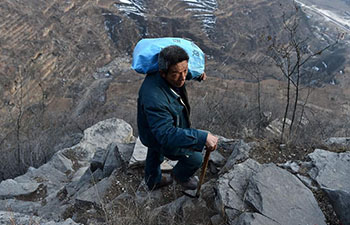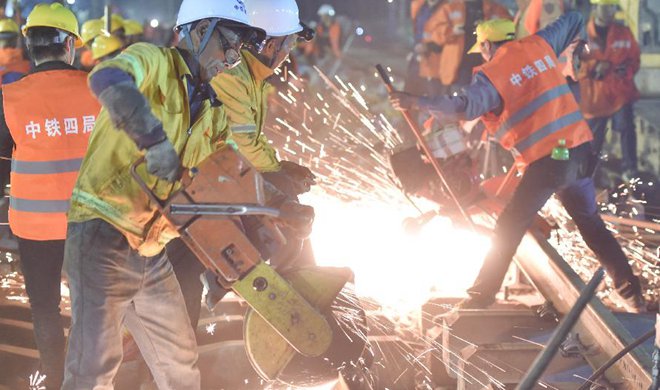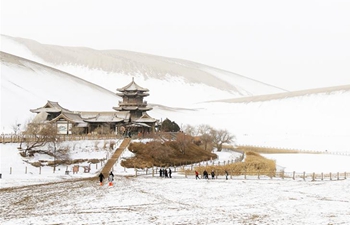BEIJING, Jan. 22 (Xinhua) -- Using remote sensing, Chinese archaeologists believe they have located a city of the Protectorate of the Western Regions, a major city on the Silk Road, in Koyuk Shahri of Luntai County in Xinjiang Uygur Autonomous Region.
"Thanks to remote sensing, we can start our excavation of the Protectorate of the Western Regions this year," said Li Wenying, deputy director of the Xinjiang Cultural Relics and Archaeology Research Institute.
The city was established in 60 B.C.to supervise domestic and foreign affairs around Tarim Basin, protecting the Silk Road from military assaults.
However, due to the devastation of the landscape around the area, the precise location of the city was not confirmed. There were three candidates: Kona Shahri, Koyuk Shahri and Drow Kurt.
Last year, archaeologists from the Institute of Remote Sensing and Digital Earth (RADI) under the Chinese Academy of Sciences (CAS) exploited remote sensing technology to find an "abnormal" ring around the Koyuk Shahri, which was later proved to be a moat.
"Based on terrain analysis, the moat can be dated back to 2,200 years ago, which conforms to the written records of the Protectorate of the Western Regions," said Nie Yueping, a researcher from the RADI.
They also found the ancient city site in Koyuk Shahri was constructed with the rectangular facade and the round interior.
In terms of the architectural pattern, while the Western Han Dynasty cities were preeminently rectangular, cities in western regions and kingdoms were round. City site in Koyuk Shahri is a combination of the two, different from the other two candidates.
Archaeologists have restored the original shape of the ancient city through digitization. Its highest point is six meters above the earth, which demonstrates that above the rammed earth, there used to be a "high-rise building with stairs."
Moreover, the side length of the ancient city wall is roughly 230 meters, which matches the Western Han Dynasty standard.
The research program on the Protectorate of the Western Regions is supported by the Joint Laboratory of Remote Sensing Archaeology (JLRSA), co-established by the CAS, the State Administration of Cultural Heritage and the Ministry of Education in China.
Besides, the RADI has participated in the searching for Yangguan, an important pass on the Silk Road fortified more than 2,000 years ago, as well the first Paleolithic cave site found in northwest China' s Xinjiang Uygur Autonomous Region.
"The remote sensing technology can adapt to different landscapes. We hope that in the future, more mature technology can be applied to more archaeological work," said Zhu Jianfeng, a researcher at RADI.

















